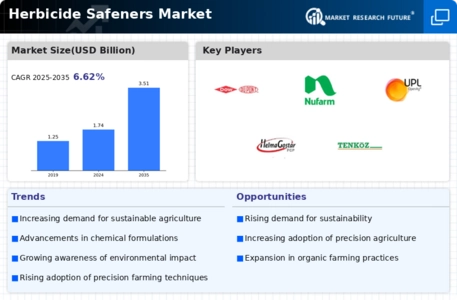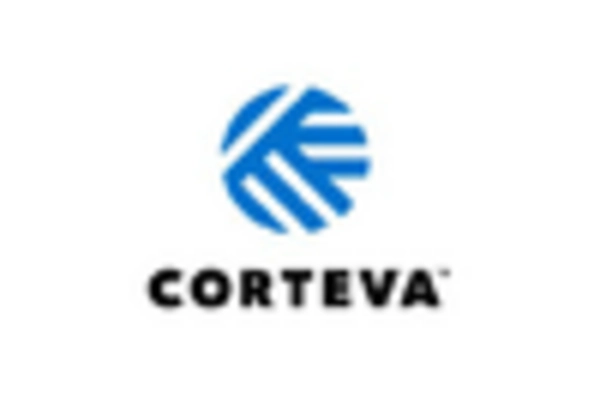Market Trends
Key Emerging Trends in the Herbicide Safeners Market
herbicide safeners market is witnessing notable trends driven by the increasing adoption of herbicides, advancements in agricultural technology, and regulatory changes. Herbicide safeners are chemical compounds added to herbicide formulations to protect crops from phytotoxicity and enhance herbicide selectivity, allowing for more effective weed control while minimizing crop damage. One significant trend is the growing demand for herbicide safeners as farmers seek to maximize crop yields and optimize weed management practices. With rising global population and food demand, farmers are under pressure to improve agricultural productivity and efficiency, driving the adoption of herbicide-based weed control strategies that can mitigate yield losses and increase crop profitability.
Moreover, advancements in agricultural technology and herbicide formulation techniques are driving innovation in the herbicide safeners market. Manufacturers are investing in research and development to develop new and improved safening agents that offer enhanced crop safety, compatibility with a broader range of herbicides, and efficacy across different environmental conditions. Additionally, there's a growing emphasis on integrated weed management (IWM) approaches that combine herbicide application with other weed control tactics, such as crop rotation, cover cropping, and mechanical weed control, to minimize reliance on herbicides and reduce the risk of herbicide resistance development.
Furthermore, the herbicide safeners market is benefiting from regulatory changes aimed at promoting sustainable agricultural practices and reducing environmental impact. Regulatory agencies are increasingly requiring the use of safening agents in herbicide formulations to protect non-target crops and minimize off-target herbicide drift, thereby ensuring environmental safety and compliance with regulatory standards. Additionally, there's a growing demand from consumers and retailers for food products produced using environmentally friendly and socially responsible farming practices, driving adoption of herbicide safeners as part of integrated pest management strategies.
Additionally, the herbicide safeners market is witnessing increasing demand from emerging economies and regions with expanding agricultural sectors. As farmers in these regions seek to improve crop yields, enhance food security, and increase agricultural productivity, there's a growing market for herbicide safeners to support the adoption of herbicide-based weed control practices. Moreover, as global agricultural trade continues to expand, there's a corresponding increase in demand for herbicide safeners to ensure the safety and quality of exported crops, meet regulatory requirements, and maintain market access.
However, the herbicide safeners market faces challenges such as limited awareness among farmers, regulatory constraints, and concerns about chemical residues in food and the environment. Despite the benefits of herbicide safeners in enhancing crop safety and herbicide efficacy, adoption rates remain relatively low among farmers, particularly in developing countries where knowledge and access to agricultural inputs may be limited. Additionally, regulatory approval processes for safening agents can be lengthy and costly, posing barriers to market entry for manufacturers and hindering innovation in the herbicide safeners market.
Moreover, concerns about chemical residues in food and the environment raise questions about the safety and sustainability of herbicide-based weed control practices. While herbicide safeners are designed to enhance crop safety and minimize herbicide residues in food and the environment, some stakeholders remain cautious about the potential risks associated with pesticide use and pesticide residues in food. Addressing these concerns will require collaborative efforts from policymakers, researchers, industry stakeholders, and consumers to ensure the responsible use of herbicides and herbicide safeners, promote sustainable agricultural practices, and safeguard food safety and environmental health.
herbicide safeners market is experiencing growth and evolving trends driven by increasing demand for herbicide-based weed control strategies, advancements in agricultural technology, and regulatory changes aimed at promoting sustainable farming practices. As stakeholders across the agricultural value chain collaborate to address challenges related to adoption, regulation, and perception of herbicide safeners, the market is poised for further expansion and innovation. By promoting the responsible use of herbicides, supporting integrated weed management approaches, and investing in research and development of safer and more effective safening agents, the herbicide safeners market can contribute to a more sustainable and productive agriculture sector.

















Leave a Comment